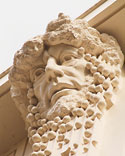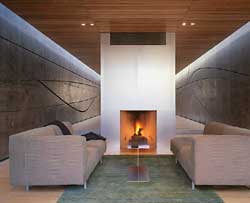Concrete Gets Glamorous in the 21st Century
|
Ricciotti will test the architectural capabilities of Ductal again at the Musée des Civilisations de l'Europe et de la Méditerranée, in Marseilles, which won't be completed until 2009. In this project, he plans to weave solid strands of the material into a delicate concrete lattice (another oxymoron), forming a warp-and-woof pattern. The effect will be an abstract interpretation of Islamic decorative motifs, while the whole museum will emerge as what Ricciotti calls a "vertical casbah"-the modern version of a traditional North African citadel.
Closer to home, creative use of concrete thrives, even if the circumstances are less paradoxical. Santa Monica−based Pugh + Scarpa Architects have designed a house in Silverlake, the architecturally affected neighborhood of Los Angeles. Innovation happens in straightforward problem-solving as often as it happens in formal experimentation, and Pugh + Scarpa have illustrated this with the design of the Vail-Grant Residence. The site is a steep hillside with the added problem of being adjacent to a Neutra house. The architects strove to preserve views of this iconic structure while meeting a complex set of zoning requirements.
|
They discovered that encroaching on the steep topography could be managed better with structural-concrete-insulating panels (SCIPs), rather than poured-in-place concrete and tall retaining walls. Custom designed by Green Sandwich Technologies, the panels are lightweight and easy to install. They are more cost-effective than poured-in-place concrete, too. By limiting the width to 15 feet throughout, the architects reduced spans and further simplified construction.
The use of SCIPs reflects the effort manufacturers are making to demonstrate how green concrete can be. The Green Sandwich Panels at the Vail-Grant Residence provide an R-40 insulating performance(as well as high sound-coefficient protection). Their composition is impressive: Their recycled-material content is 40 percent by weight and 60 percent by volume; fly ash accounts for 50 percent of the content; waste is 100 percent recyclable. This is a clear indication of how both innovation and invention are being applied to all aspects of this highly versatile material.










